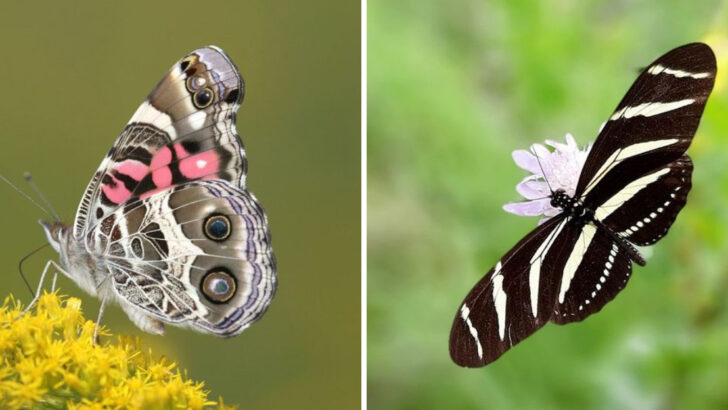Butterflies are staging a comeback—and it’s nothing short of magical.
Once slipping quietly from our backyards, these shimmering creatures are fluttering back in bold, beautiful numbers.
Their wings catch the sun like stained glass. Their presence turns an ordinary garden into a living fairy tale. And make no mistake—this isn’t just luck. It’s the result of passionate gardeners, wildflower rebels, and nature lovers fighting for every petal and patch of milkweed.
Now, gardens across America are buzzing—well, fluttering—with life.
From fiery orange Monarchs to blues that look like they fell out of the sky, these 20 butterfly species are stealing the show and stealing hearts.
Each one has a story. Each one is a sign that something is going right.
Monarch Butterfly
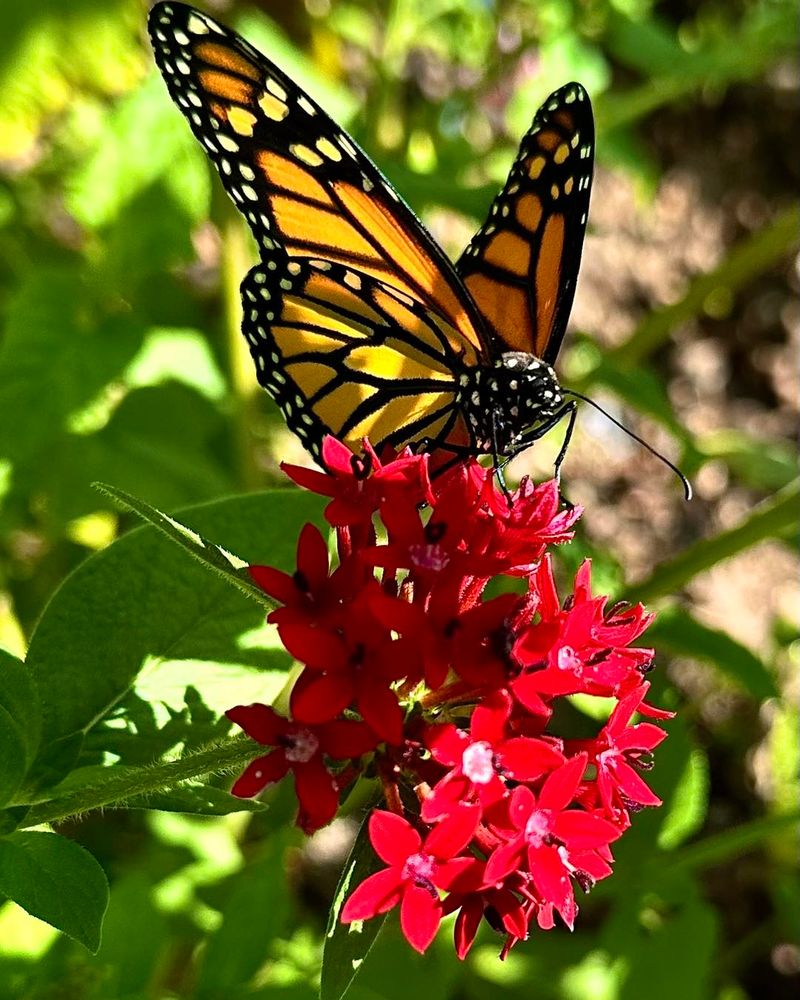
The Monarch butterfly, with its vibrant orange and black wings, is a symbol of transformation and hope. Known for its incredible migratory journey, spanning thousands of miles, this butterfly captivates with both its beauty and resilience.
In recent years, conservation efforts have helped stabilize its population, allowing it to grace gardens once more. The Monarch’s preference for milkweed makes it a frequent visitor to areas where these plants are cultivated.
Did you know? Monarch butterflies have one of the longest migrations of any insect, traveling up to 3,000 miles to their wintering grounds.
Swallowtail Butterfly
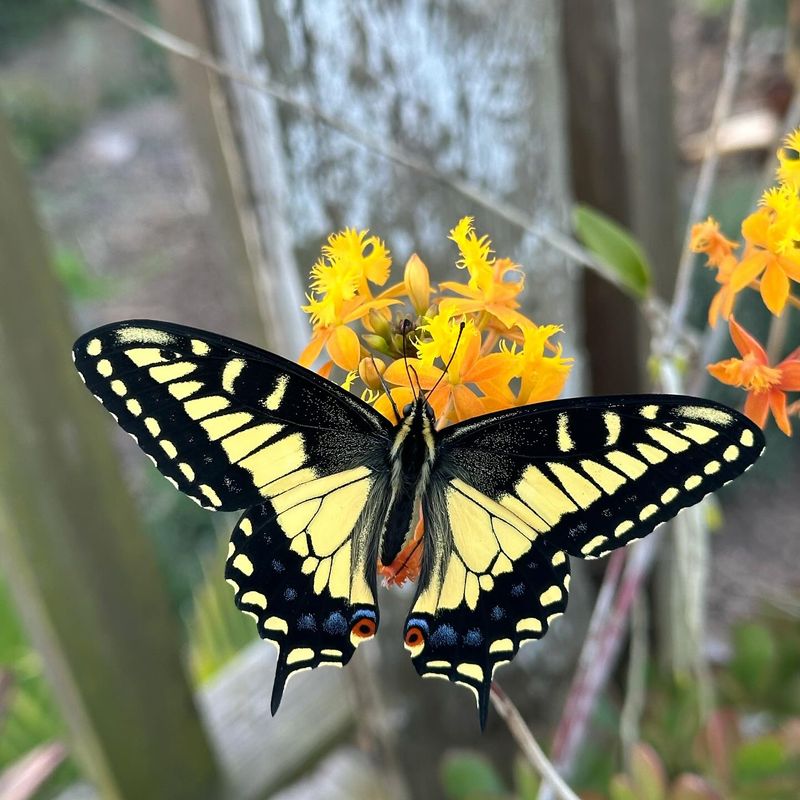
Full of grace and elegance, the Swallowtail butterfly enchants with its vibrant hues and fluid flight. Its name is derived from the distinctive tails that protrude from its hindwings, resembling the forked tails of swallows.
These butterflies are particularly drawn to gardens that offer a variety of flowering plants. Their presence often signifies a healthy and diverse ecosystem.
Historically, Swallowtails were revered in many cultures, symbolizing change and new beginnings. They continue to inspire with their beauty and adaptability.
Painted Lady
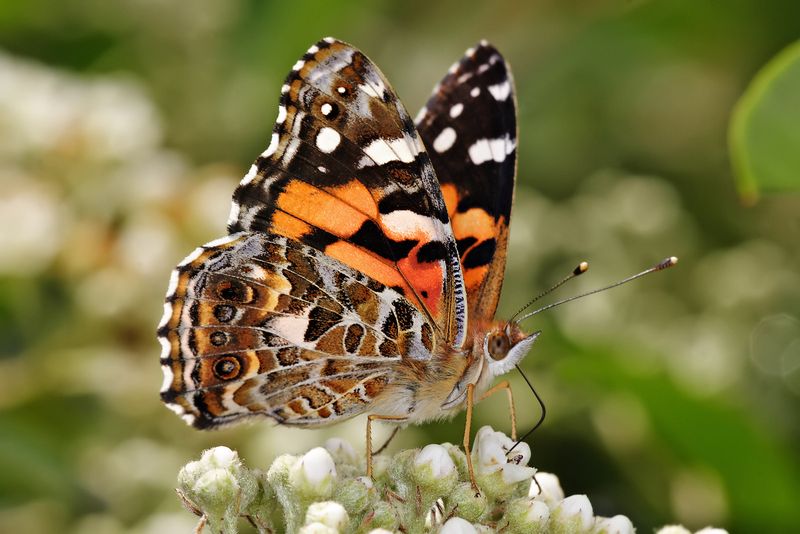
The Painted Lady is a global traveler, known for its strikingly patterned orange and black wings. This butterfly is a master of adaptation, thriving in various climates and environments.
Its reappearance in American gardens highlights its resilience and ability to find suitable habitats. This species is often seen sipping nectar from a variety of flowers, adding bursts of color to any garden.
Fun fact: Painted Ladies can be found on every continent except Antarctica, making them one of the most widespread butterfly species in the world.
Red Admiral
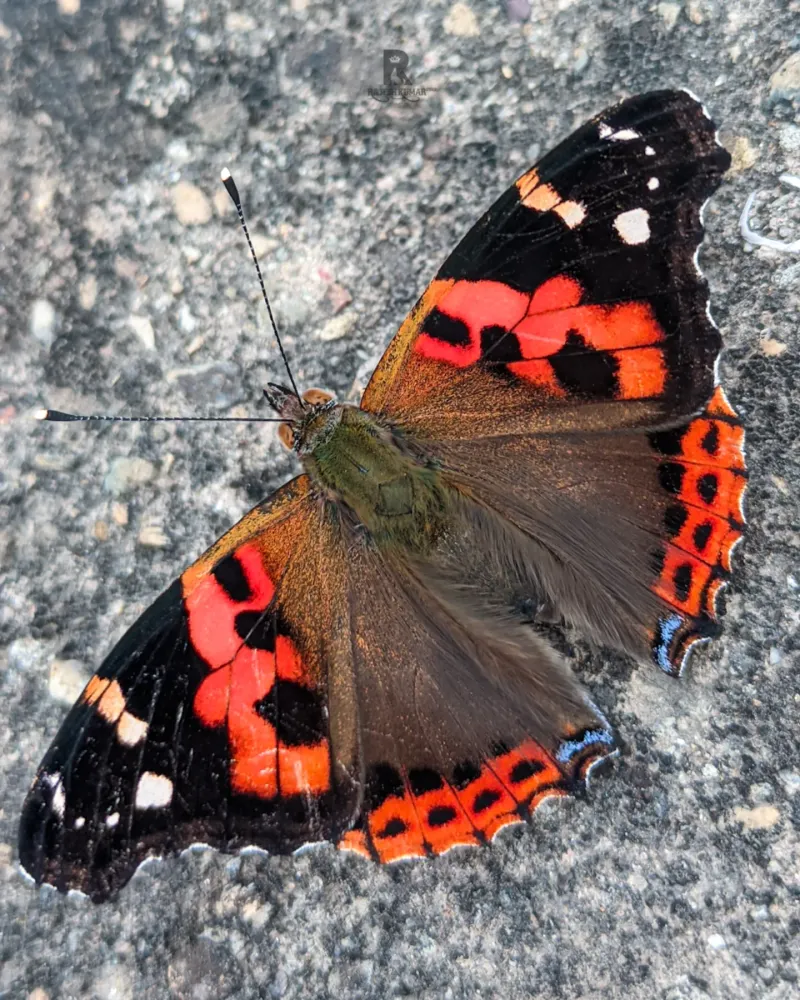
The Red Admiral, with its striking red and black wings, is a sight to behold. Known for its friendly nature, this butterfly often interacts with humans, making it a favorite among garden enthusiasts.
Red Admirals are highly adaptable and can be found in various habitats, including gardens, woodlands, and meadows. Their love for nettles makes them frequent visitors to gardens where these plants flourish.
Intriguingly, Red Admirals are known to have varying flight patterns depending on the weather, showcasing their adaptability and survival instincts.
Gulf Fritillary

Gulf Fritillaries are a dazzling sight, known for their bright orange wings adorned with silver spots. These butterflies have a particular fondness for passionflowers, making them a familiar presence in gardens where these vines grow.
Their striking appearance and graceful flight patterns make them a favorite amongst butterfly watchers. As their population rebounds, they continue to contribute to the ecological diversity of gardens.
An interesting tidbit: Gulf Fritillaries are named for their distribution around the Gulf of Mexico, where they are commonly observed.
Viceroy Butterfly
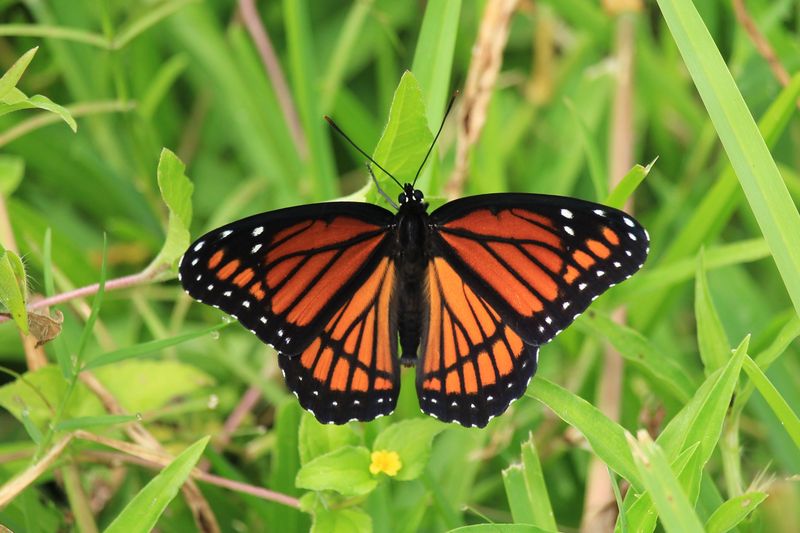
The Viceroy butterfly, often mistaken for the Monarch, cleverly mimics its more famous relative. This mimicry serves as a defense mechanism against predators who avoid the bitter-tasting Monarch.
Viceroys are smaller and have a distinctive black line across their hindwings. Their preference for willow trees and poplars makes them a common sight in gardens with these features.
This butterfly’s mimicry is a fascinating example of nature’s ingenuity, allowing it to thrive alongside its lookalike cousin in shared habitats.
American Lady
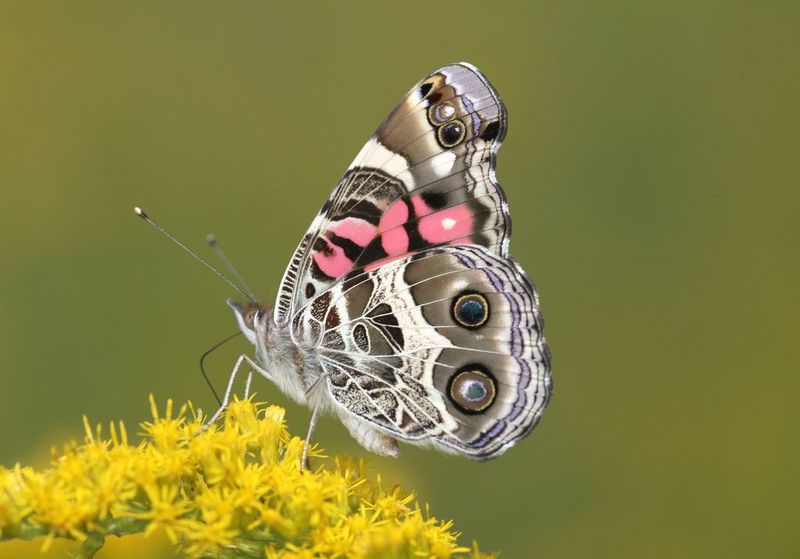
American Ladies are known for their complex and beautiful wing patterns, featuring orange, black, and white designs. These butterflies are commonly found in open areas and gardens where daisies and asters flourish.
Their ability to adapt to different environments has facilitated their comeback in many American gardens. Observing an American Lady fluttering from flower to flower is a delightful experience for any nature lover.
Did you know? The American Lady is often confused with the Painted Lady, though they differ in their wing patterns and habitat preferences.
Common Buckeye
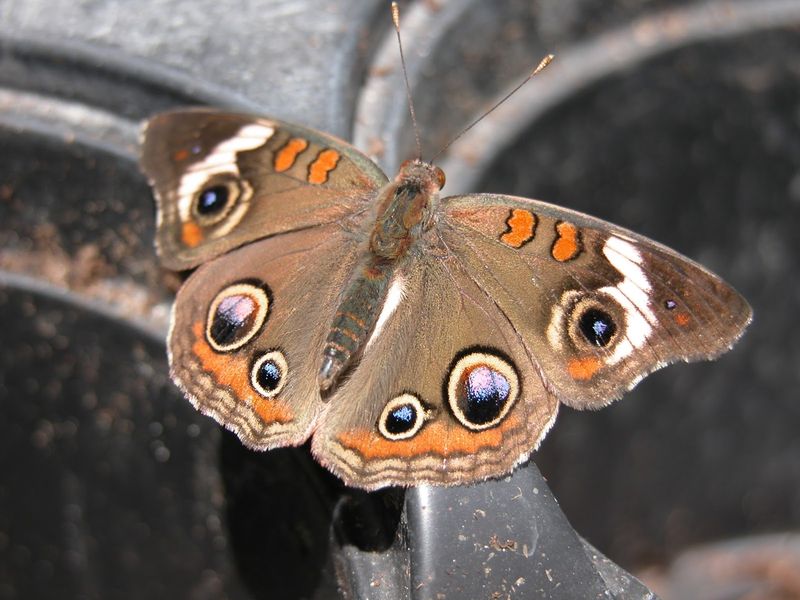
With its bold eyespots and vibrant coloration, the Common Buckeye is a butterfly that demands attention. These eyespots are not just decorative; they serve as a defense mechanism, deterring predators.
Common Buckeyes thrive in sunny, open areas, and they are particularly fond of gardens with snapdragons and verbena. As they flutter about, they add a dynamic presence to the garden landscape.
A fun fact: The Buckeye’s name is derived from the resemblance of its eyespots to the buckeye nut, adding a touch of local charm to its identity.
Zebra Longwing
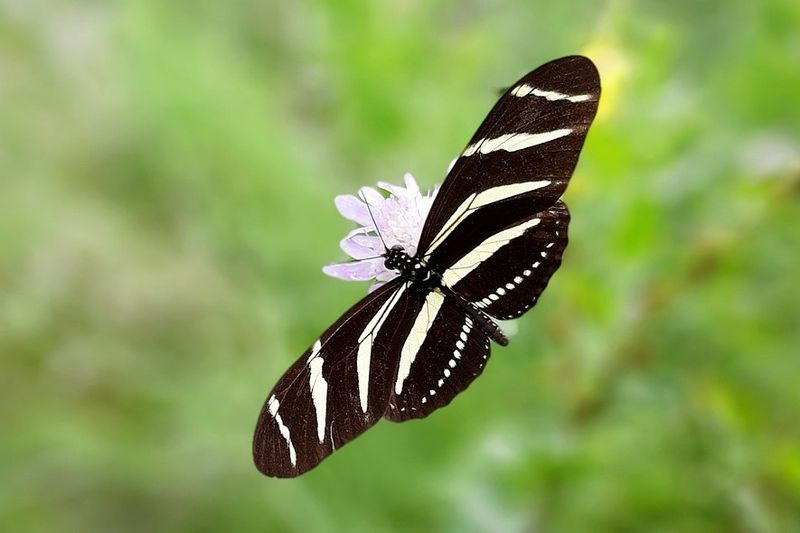
The Zebra Longwing is aptly named for its striking black and white striped wings, reminiscent of a zebra. This unique pattern makes it one of the most recognizable butterflies in American gardens.
Known for its slow and graceful flight, the Zebra Longwing often feeds on nectar and pollen, which provides it with a rich diet. Its presence is a good indicator of a thriving garden ecosystem.
A quirky fact: Zebra Longwings are the state butterfly of Florida, symbolizing the state’s rich biodiversity and natural beauty.
Eastern Tiger Swallowtail
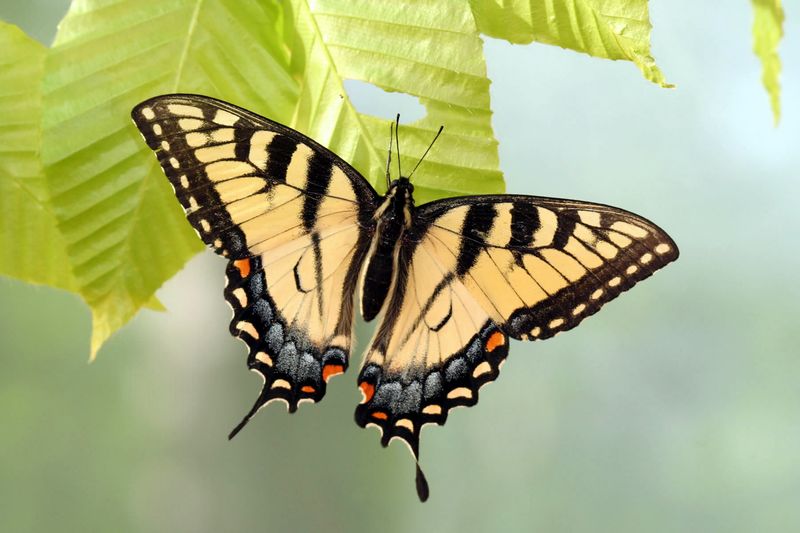
The Eastern Tiger Swallowtail is a majestic butterfly, known for its large size and striking yellow and black striped wings. This species is a frequent visitor to gardens with lilacs, azaleas, and wild cherries.
Its presence in American gardens signifies a healthy habitat, as it requires specific plants for nourishment and reproduction. Observing this butterfly in flight is akin to watching a piece of living art.
Did you know? The Eastern Tiger Swallowtail is one of the most common swallowtail species in the eastern United States, cherished for its beauty and grace.
Mourning Cloak
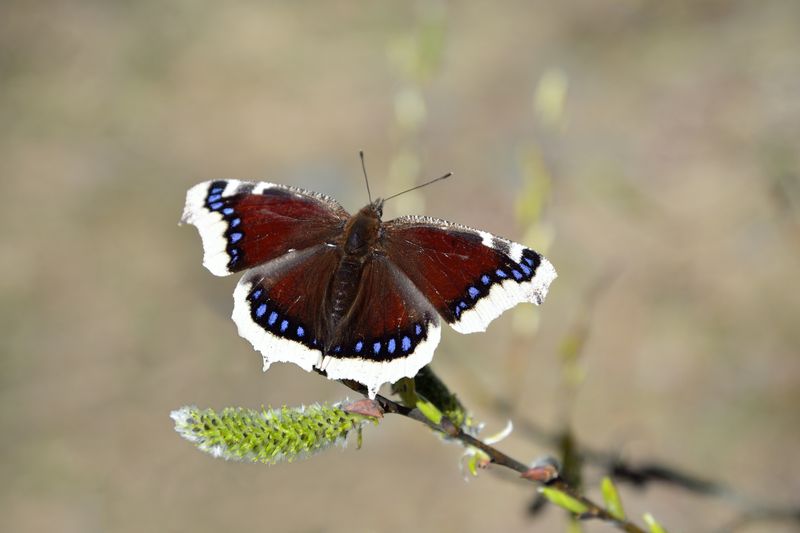
The Mourning Cloak butterfly is a picture of elegance, with its deep brown wings bordered by blue and yellow. This striking appearance has made it a beloved visitor to many American gardens.
These butterflies are unique in their ability to hibernate during the winter months, often emerging in early spring to grace gardens with their presence. Their preference for trees makes them a common sight amidst willows and elms.
Fun fact: The Mourning Cloak is considered one of the longest-living butterflies, with some individuals living up to a year.
Clouded Sulphur
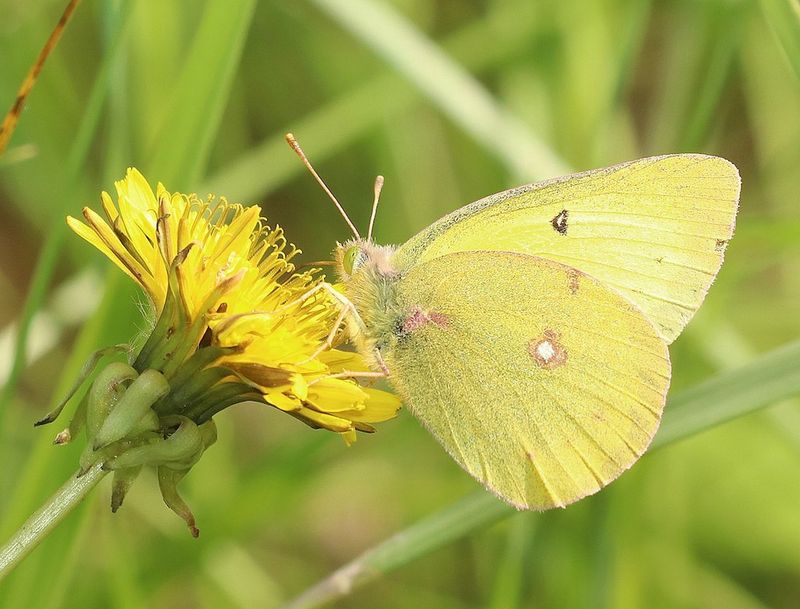
Clouded Sulphurs are a delicate sight, with their pale yellow wings softly fluttering among wildflowers. These butterflies are often seen in gardens that offer a variety of nectar-rich flowers.
Their subtle beauty and gentle flight patterns are a refreshing addition to any garden, creating an atmosphere of tranquility. As their populations recover, they continue to brighten landscapes across America.
Did you know? Clouded Sulphurs are known for their courtship flights, where males and females can be seen dancing gracefully in the air.
Great Spangled Fritillary
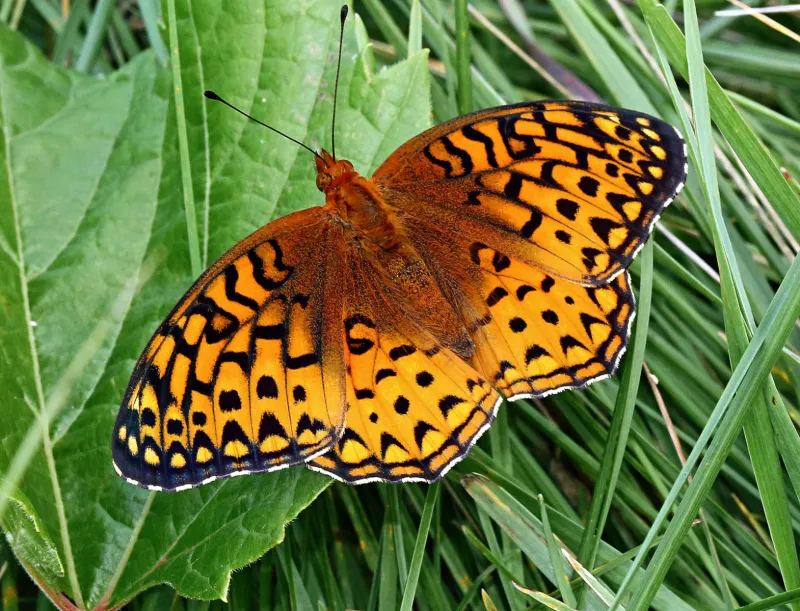
The Great Spangled Fritillary is a captivating butterfly, known for its orange wings adorned with silver spots. This species frequents gardens with violets, as they are essential for their caterpillars.
Observing a Great Spangled Fritillary basking in the sun is a delightful experience, showcasing the intricate beauty of its wing patterns. It serves as a reminder of the rich biodiversity present in well-maintained gardens.
An interesting titbit: Great Spangled Fritillaries are named for the shimmering silver spots that decorate their wings, adding a touch of sparkle to the garden.
Question Mark Butterfly
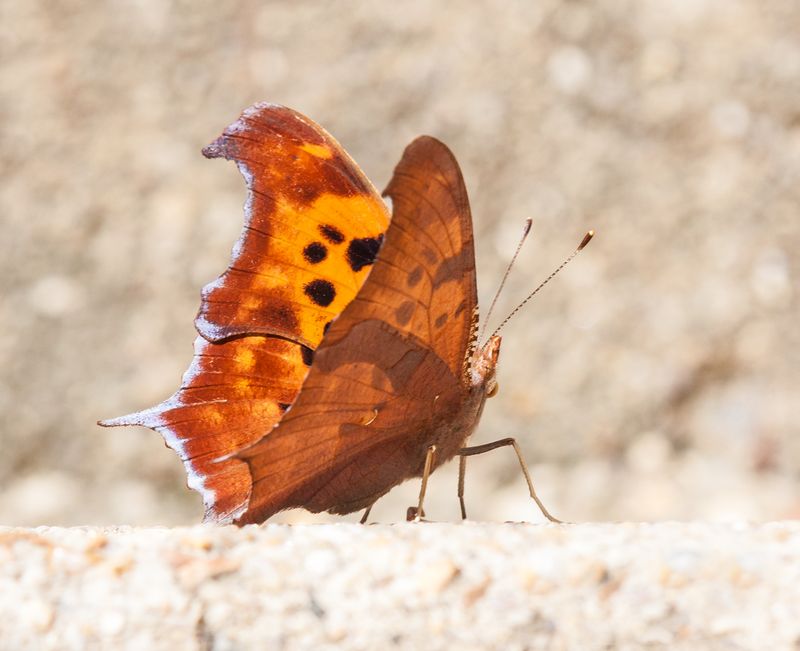
The Question Mark butterfly is intriguing, named for the small silver question mark shape on the underside of its wings. This unique marking makes it a fascinating subject for butterfly enthusiasts.
These butterflies are often found in gardens with plenty of trees and shrubs, where they can find food and shelter. They add a touch of mystery and elegance to any natural setting.
Fun fact: The Question Mark’s name reflects its distinctive wing pattern, which has intrigued observers for centuries, adding an element of curiosity to its allure.
Pipevine Swallowtail
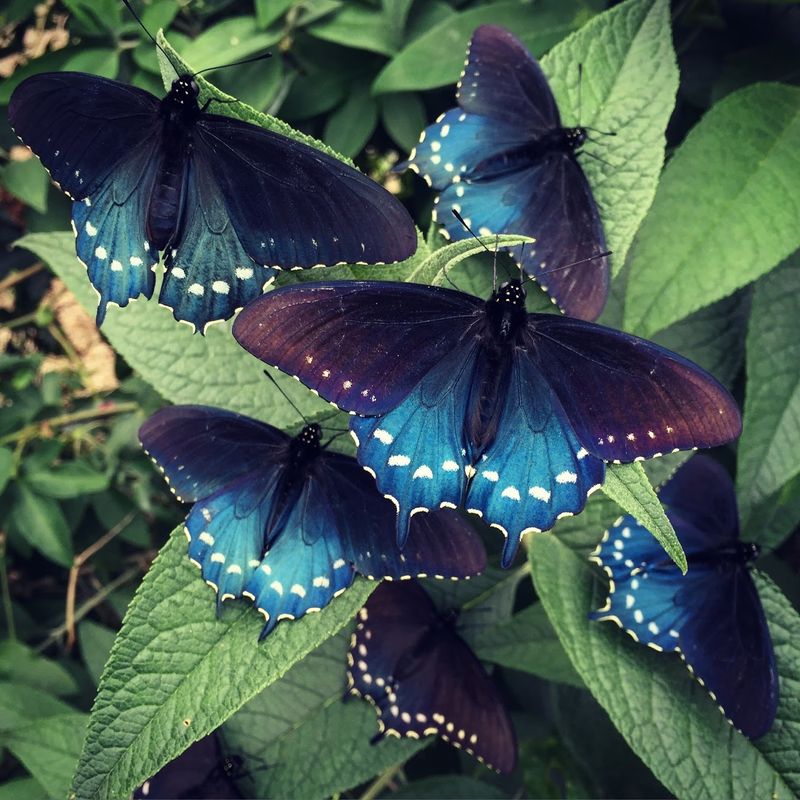
With its iridescent blue wings, the Pipevine Swallowtail is a jewel of the garden. This butterfly is particularly attracted to pipevine plants, which are crucial for its reproductive cycle.
Its shimmering appearance is not only stunning but also serves as a warning to predators about its toxicity. As gardens become more diverse in plant offerings, the Pipevine Swallowtail is returning to the forefront of butterfly communities.
Did you know? The Pipevine Swallowtail’s striking coloration is a classic example of aposematism, where bright colors serve as a deterrent to potential threats.
Baltimore Checkerspot

The Baltimore Checkerspot is a rare and beautiful butterfly, with its distinctive black and orange checkered wings. This species is often found in gardens with an abundance of turtlehead plants, its primary host.
The butterfly’s striking coloration and unique pattern make it a standout in any collection. As efforts to restore native plant species progress, the Baltimore Checkerspot is beginning to reappear in suitable habitats.
Fun fact: The Baltimore Checkerspot is the state butterfly of Maryland, representing the state’s rich natural heritage and commitment to conservation.
Cabbage White
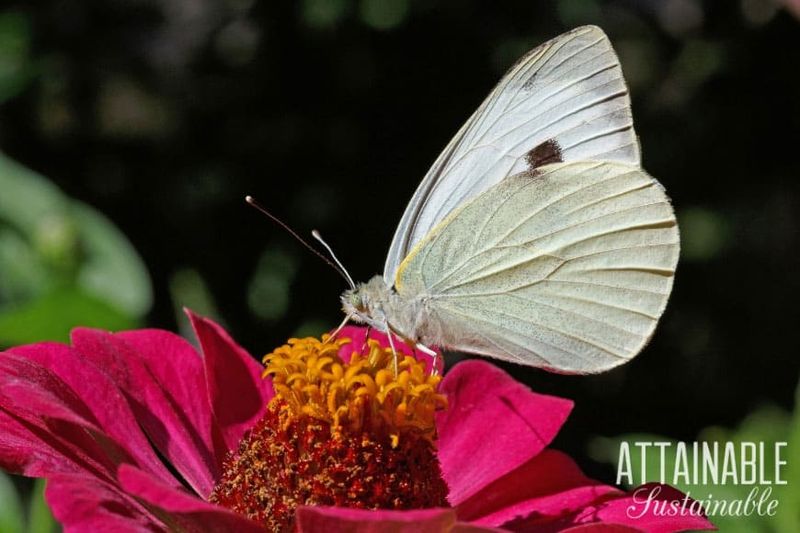
The Cabbage White butterfly, with its soft white wings and subtle black spots, is a common yet charming visitor to gardens. Often seen fluttering above vegetables, this butterfly is both a delight and a challenge for gardeners.
Despite its name, the Cabbage White is not limited to cabbage plants and can be found in gardens with a variety of greens. Its adaptability has ensured its continued presence in American gardens.
An intriguing fact: The Cabbage White is one of the most widespread butterflies globally, symbolizing both beauty and resilience in cultivated landscapes.
Orange Sulphur
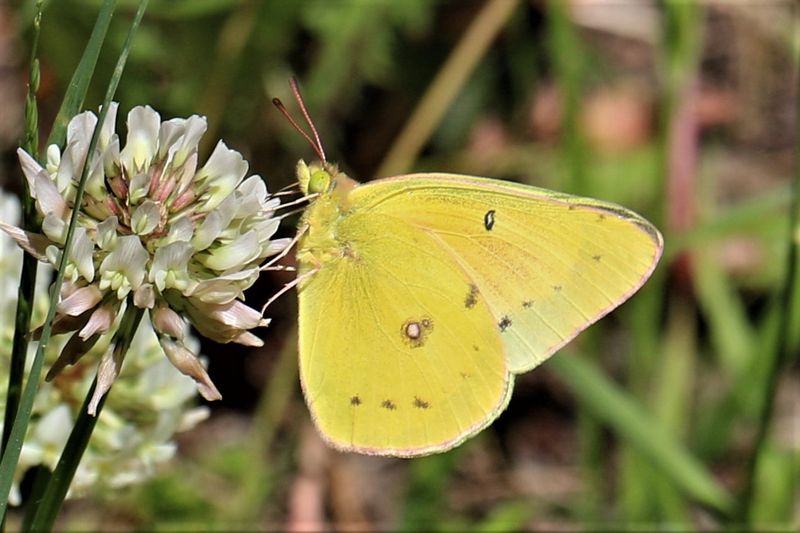
The Orange Sulphur is a vibrant butterfly, known for its striking orange wings that stand out against the greenery of a garden. These butterflies are often seen darting among wildflowers, creating a lively scene.
Their adaptability and preference for open spaces with plenty of nectar sources make them a common sight in many gardens. As their populations grow, Orange Sulphurs continue to enhance the visual appeal of outdoor spaces.
Did you know? Orange Sulphurs are known for their migratory behavior, often moving northward in the spring and returning south as temperatures cool.
Silver-spotted Skipper
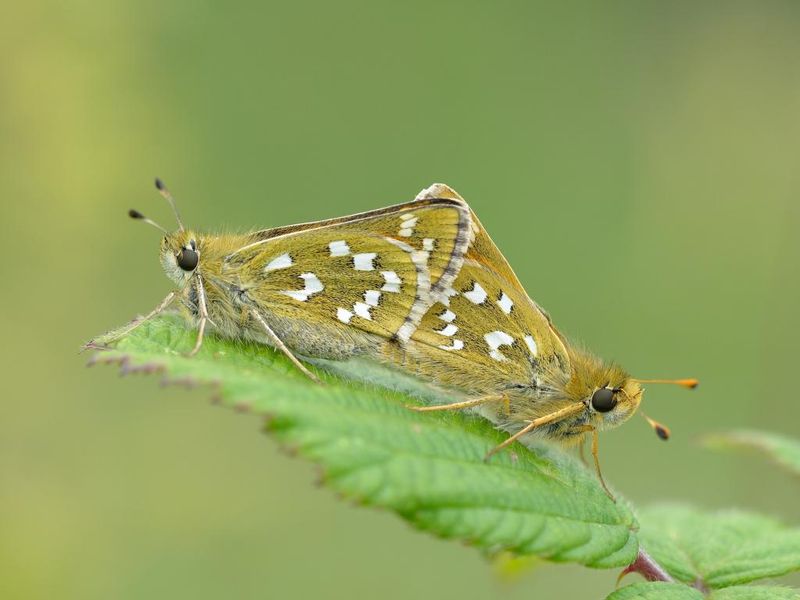
The Silver-spotted Skipper, with its distinctive silver spots and compact body, is a butterfly that captures attention. These butterflies are known for their rapid, skipping flight patterns.
Often found in gardens with legumes, the Silver-spotted Skipper adds a dynamic presence to the landscape. Its ability to adapt to different environments has helped its numbers stabilize in recent years.
Fun fact: The Silver-spotted Skipper is one of the largest skippers in North America, known for its unique flight style and striking appearance.
Karner Blue Butterfly
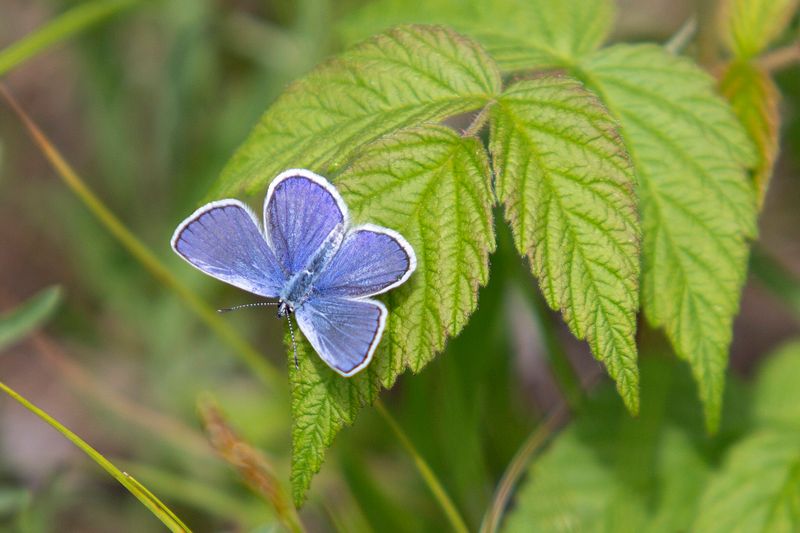
The Karner Blue Butterfly is a symbol of hope for conservationists. Its shimmering blue wings glisten in the sun as it flutters delicately among the lupine flowers, its primary host plant. Once on the brink of extinction, this butterfly is making a remarkable comeback due to dedicated restoration efforts.
Conservationists have worked tirelessly to recreate its natural habitat, ensuring a steady supply of wild lupines. The Karner Blue’s resurgence is a testament to the power of focused ecological efforts. Its presence in gardens is a delightful reward for those who nurture native plants.
Did you know? This butterfly was named after novelist Vladimir Nabokov’s fictional character in “Pnin.”

